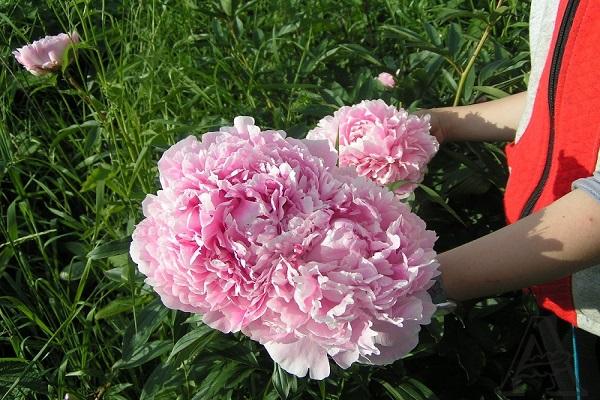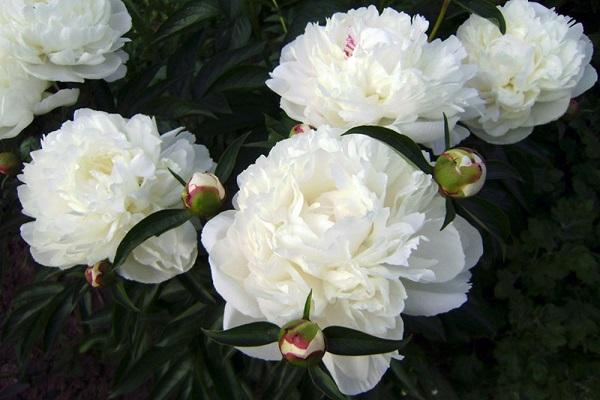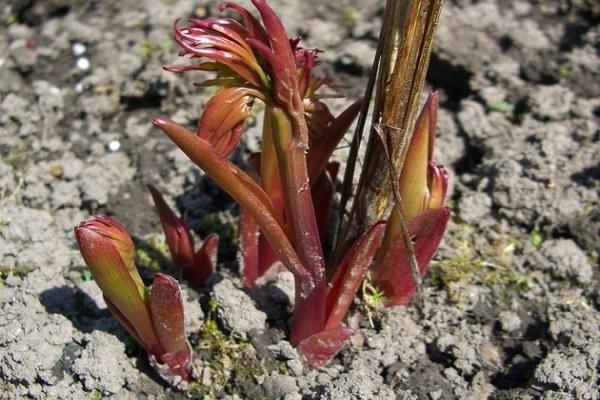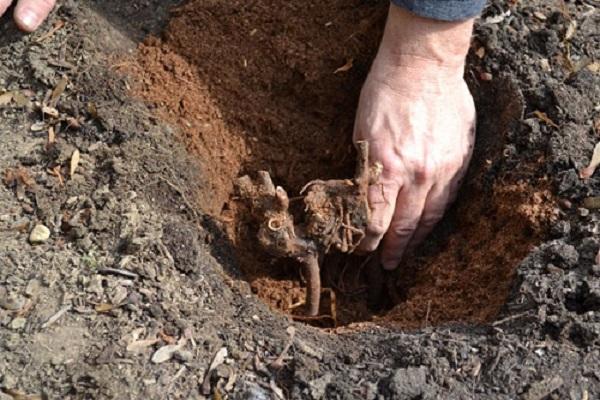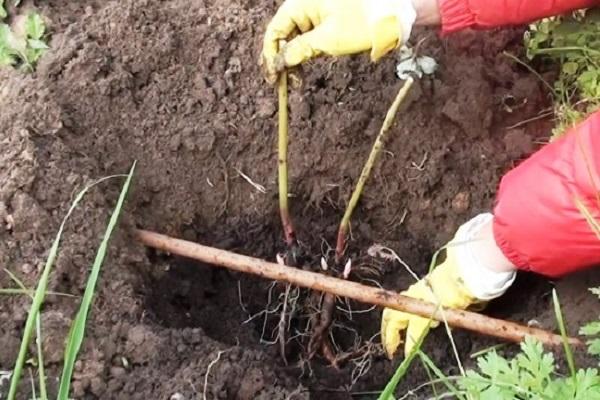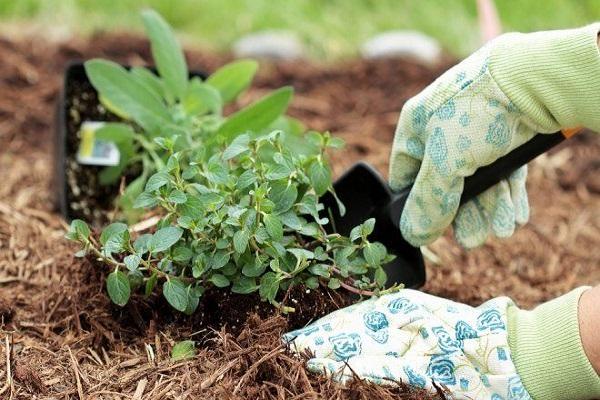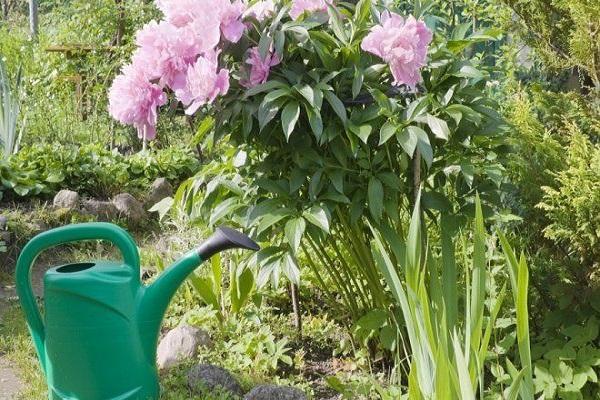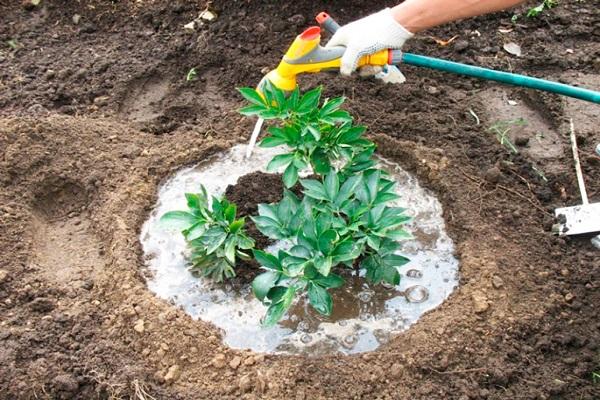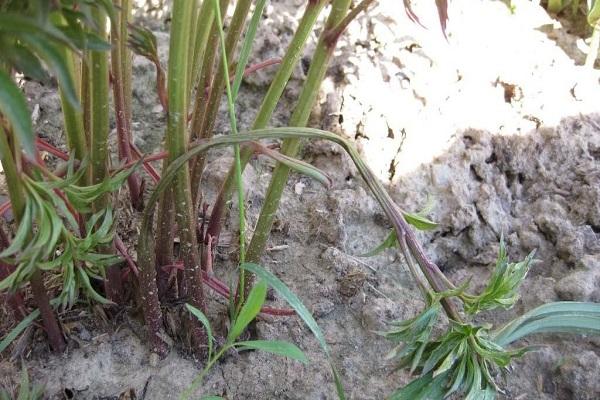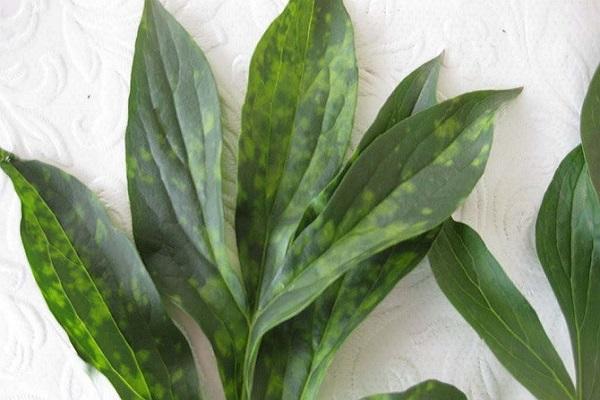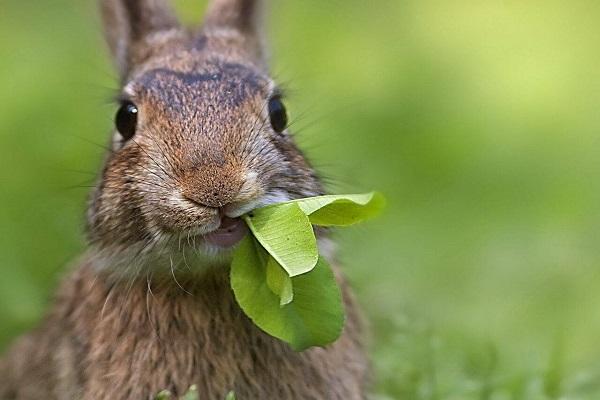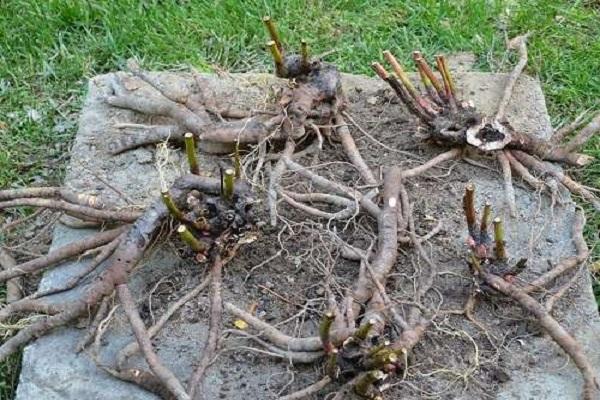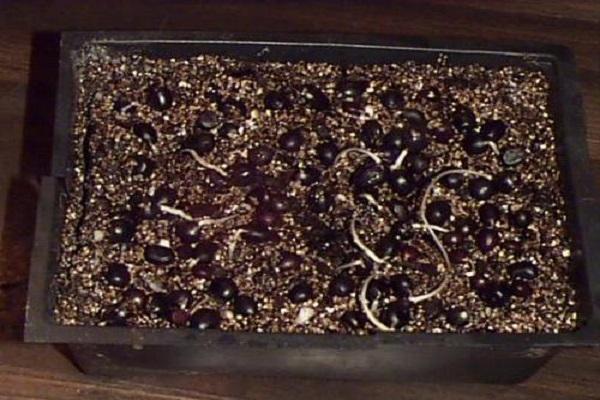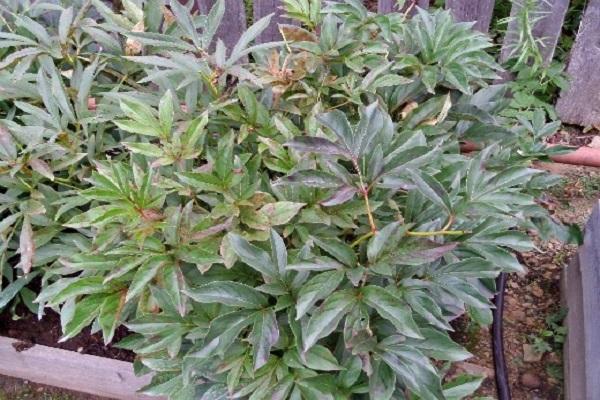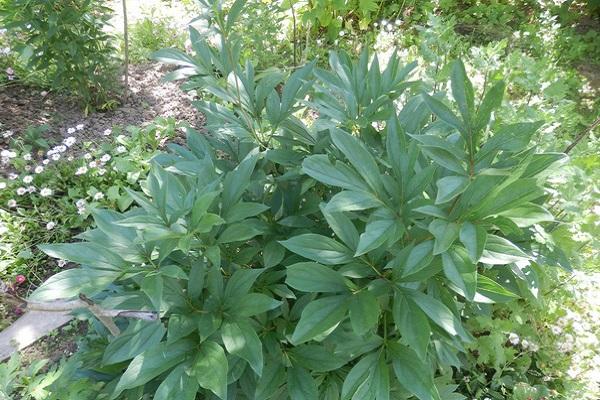One of the most luxurious varieties of peony is Sarah Bernhardt. First introduced more than a century ago, this elegant and fragrant plant is popular among gardeners. This type of peony is loved for its harmonious combination of spectacular appearance, noble shades and unpretentiousness.
- Description and features
- History of the origin of the flower
- Varieties
- Red Sarah Bernard
- White
- Unique
- Landing
- Selecting a location
- Soil requirements
- Deadlines
- How to plant
- Care
- Watering
- Loosening and weeding
- Mulching
- Top dressing
- Diseases and pests
- Gray rot
- Rust
- Mosaic
- Nematodes
- Rodents
- Reproduction
- Division of rhizomes
- Collection and storage of seeds
- Why doesn't it bloom
- Wrong choice of landing site
- Frequent transplants and divisions
- Incorrect landing
- Respectable age
- Too acidic soil
- Potassium deficiency
- Insufficient watering
- Diseases or pests
- Use in landscape design
Description and features
Peony Sarah Bernhardt is a perennial herbaceous plant that can decorate and transform a garden or summer cottage. Its large flowers have a dense texture and terry surface. Numerous concave petals are arranged in the form of scales. The stems are not tall, but quite strong and stable, so the peony does not need support. The bush looks very neat.
The Sarah Bernhardt peony variety is characterized by openwork leaves with a slight dissection, which retain their rich green color from April until late autumn.
The flowering period begins relatively late, lasting about 1-2 months. The color range is very noble, it is represented by white, red, pearl pink and milky flowers.
History of the origin of the flower
A hybrid peony variety was born more than a century ago. Its author was the famous breeder Pierre Lemoine, who was a contemporary and admirer of the talented actress Sarah Bernhardt. In his creation, he decided to embody the main inherent features of it - sophistication, charm, sophistication, grace and aristocracy.
Varieties
Peony Sarah Bernhardt is divided into several varieties.
Red Sarah Bernard
The peony variety Red Sarah Bernhardt is characterized by an expressive aroma, as well as strong, strong peduncles. The large flowers have a truly luxurious color - dark red with copper and ruby tints. The terry surface of their petals harmoniously combines with glossy dark green foliage. The average height of such a bush is 85-90 centimeters.
White
The White variety is distinguished by snow-white flowers with a delicate terry surface and a pleasant sweetish aroma. The silver tint gives nobility and sophistication. The height of the peony bush is about 75 centimeters.
Unique
Sarah Bernhardt Unique is a flower in pearl pink tones with soft lilac tints. Begins to bloom in the first half of summer.
Landing
Before planting peonies, it is necessary to take into account the soil requirements.
Selecting a location
Peony likes an abundance of light, so it is most comfortable in areas with natural sunlight and little shadow. Heavily shaded places are not suitable, as they adversely affect flowering.
Soil requirements
The optimal soil for Sarah Bernhardt peony is loamy soil with a slightly acidic reaction. If clay predominates in the soil, it is necessary to add purified river sand. If the soil contains more sand, you need to dilute it with clay. Soil with the highest hydrogen levels needs to add lime at the rate of 300-350 grams per 1 m2 - this will optimize the soil acidity indicator.
Deadlines
You should start planting the herbaceous peony Sarah Bernhardt in the spring, preferably at the end of April. Mandatory conditions are the absence of snow and frost, as well as stable air heating to a temperature of +12 ° C.
How to plant
Holes for planting peony bushes need to be prepared in advance - about two weeks. At the bottom of each planting place add a nutrient mixture consisting of 200 g of superphosphate, 0.5 liters of wood ash solution, as well as equal parts of turf soil, coarse river sand and humus.
Sarah Bernhardt peony seedlings prepared for planting must be inspected for diseases and any damage. If defects are found, you need to keep the rhizomes in a weak solution of potassium permanganate for 15 minutes.
Then make a mound in the planting hole, place the seedling in it and sprinkle with the prepared substrate. The planting depth should not exceed 2.5-4 centimeters.
Care
Competent and regular movement is the key to the development of peony without diseases.
Watering
The first watering of the plant is carried out immediately after planting. In the future, you need to water this luxurious flower at least twice a month in the evening. Each bush requires 30 liters of water. During prolonged dry weather, the frequency of water procedures needs to be increased.
Loosening and weeding
Weeding the soil in which the Sarah Bernhardt peony grows is required as weeds appear. After each watering, loosening is necessary. In autumn, you need to remove all dry and damaged inflorescences to reduce the risk of fungal diseases. Before wintering, prune the stems. After the cut, there should be 1-2 centimeters above the buds.
Mulching
In spring, it is recommended to mulch the soil using a mixture of wood ash and peat to increase fertility.
Peony Sarah Bernhardt usually endures wintering with ease, but sometimes you need to play it safe. To cover the bushes, you can use a layer of peat or unripe compost.
It is necessary to remove the covering material in the spring, immediately when the soil begins to thaw.
Top dressing
The first fertilizing applied to the planting site will provide the peony bush with all the necessary nutrients for three years to come. Subsequently, the plant will need to be fertilized periodically.
Nitrogen-based fertilizers have a beneficial effect on the process of bud formation. And for optimal formation of the root system, the peony will require fertilizers with a predominance of potassium and phosphorus.
It is unacceptable to apply any fertilizing in dry soil conditions, as this can lead to burns of the roots and subsequent death of the plant.
Peonies can be fed only after rain or scheduled watering.
During the spring-summer period, peonies of the Sarah Bernhardt variety require feeding in three stages:
- In early spring, before the snow melts, sprinkle a mixture of urea and potassium sulfate (15 grams of each component) around the bush.
- Before starting to plant flowers, fertilize the plant with a mixture consisting of 20 g of superphosphate, 15 g of potassium sulfate and 10 g of urea.
- At the end of the peony flowering period, use a mixture of potassium and phosphorus fertilizers (15 grams each) to stimulate bud formation.
Diseases and pests
Peony Sarah Bernhardt, with proper care, is practically not susceptible to diseases and pests, but in some cases it can be disturbed by gray mold, viruses and rodents.
Gray rot
The disease, called gray mold, poses a danger mainly to young and immature plants. Its main symptom is a gray coating on the leaves, flowers and stems.
There are two effective preventive methods:
- Bordeaux mixture - 3 liters for 1 bush;
- garlic solution - 1 chopped head of garlic per 2 liters of water.
Both products are used to treat bushes in early spring.
Rust
Rust is a dangerous disease that leads to disruption of the metabolic process, as well as a decrease in the immunity and winter hardiness of the plant. The causative agent is a rust fungus.It is easy to determine the infection - spots of a characteristic brown color appear on the peony leaves. To get rid of the disease, you need to cut off and burn all affected areas of the bush.
Mosaic
Mosaic, or ring mosaic, is a viral disease that manifests itself in the form of yellow and light green spots and stripes localized on the surface of the leaves. It cannot be treated. In order to prevent further spread of infection, it is necessary to uproot and burn the bush.
Nematodes
Nematodes are small roundworms that attack leaves, flowers, stems and even roots of a plant. The main symptoms of pest activity are:
- curvature of stems;
- swelling on the rhizomes;
- yellowish tint of leaves.
It is difficult to fight nematodes, since an abundance of chemicals is undesirable for a garden plot. The infected plant must be completely dug up and burned.
As a preventive measure before planting peony should carefully inspect the roots, and clean garden tools from any remaining soil and pour boiling water over them.
Rodents
Mice and other rodents are also enemies of peonies. They spoil the roots of plants, as a result of which the leaves begin to curl.
For protection purposes, it is advisable to plant several plants next to peonies that have a repellent effect on rodents. These include:
- black elderberry;
- chamomile;
- tansy;
- perithrum maiden;
- wormwood.
Reproduction
There are several ways to propagate the variety.
Division of rhizomes
The simplest and most effective way is dividing peony rhizomes in August or September.
It is recommended to carry out this procedure only in the 3-5th year after planting, so that the plant is sufficiently strong and strong:
- Remove the bush from the ground.
- Clean the rhizome, remove rotten parts.
- Leave the root in the sun for several hours.
- Carefully drive a wooden wedge into the center of the bush and divide the root. The separated parts should have one root and 2-3 buds.
- Treat the cut surfaces with charcoal.
- Place the resulting parts of rhizomes in previously prepared planting holes and water.
Collection and storage of seeds
It is necessary to collect seeds from mid-August to early September, while their shells are moderately soft. In place of the flower, a box is formed filled with round-shaped seeds. When the doors of the box open slightly, you need to tear it off and remove all the contents.
For subsequent propagation, large, shiny, light brown seeds should be collected. You can store them in cardboard boxes or small glass containers.
Why doesn't it bloom
Errors in care lead to lack of flowering.
Wrong choice of landing site
In a heavily shaded area, you should not expect vigorous flowering. You can correct the situation by transplanting the peony to a small hill, well lit by the sun and blown by the wind.
Frequent transplants and divisions
Replanting a peony more often than five years later leads to a weakening of the plant.
Incorrect landing
A large planting depth is unfavorable due to the roots being too far apart. It is also not recommended to plant a peony at a minimum depth, since the buds will freeze and the flowers will not be able to develop. The optimal depth is 3-4 centimeters.
Respectable age
In bushes that have been growing for several years, the intensity and quality of flowering decreases. Therefore, a transplant or division is required every five years.
Too acidic soil
Soil acidity should be reduced by adding magnesium and calcium. You can use ground limestone, wood ash or crushed chalk.
Potassium deficiency
Lack of potassium also negatively affects the flowering of the Sarah Bernhardt peony. In this situation, you need to feed the plant with a solution of potassium magnesia or potassium sulfate.
Insufficient watering
Dry soil during peony budding leads to a lack of flowering. For proper development, at least 30 liters of water per bush is required.
Diseases or pests
As a result of damage to the peony roots by nematodes or rodents, the bush stops blooming. Affected plants should be destroyed and preventive measures should be used.
Use in landscape design
This variety of peony decorates parks, squares, rock gardens, gardens and personal plots.
This flower looks most impressive next to barberry, sage, honeysuckle, hellebore, thuja, poppies and irises.

